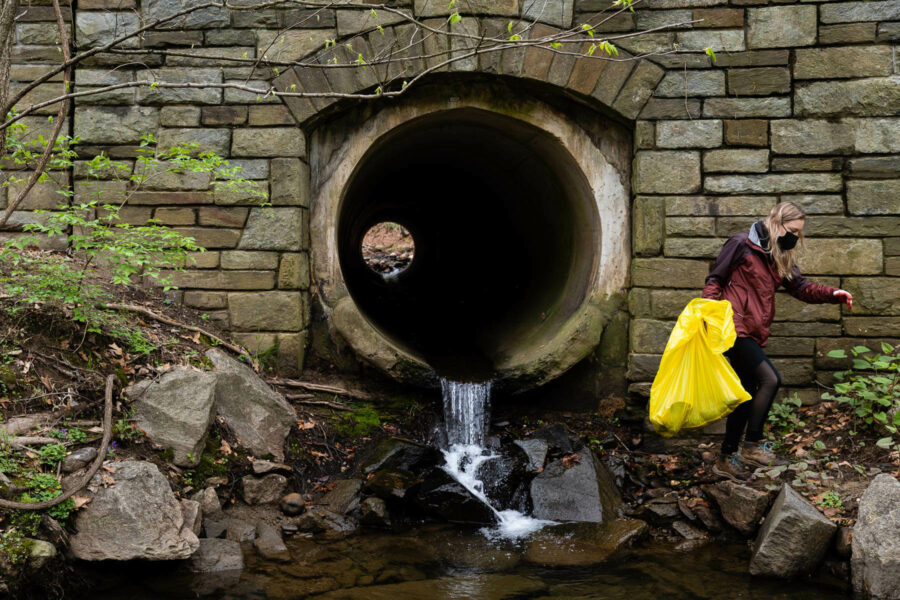An annual event keeps Washington, D.C. streams healthy

Every year, the sight of volunteers carrying brightly-colored trash bags along the trails of Rock Creek Park is a sign of the annual Extreme Cleanup, sponsored by Rock Creek Conservancy.
Rock Creek Park runs from Gaithersburg, Maryland through the nation's capital where it joins the Potomac River. It is the oldest urban national park in the country but the surrounding area has changed significantly since it was founded in 1890. Development and urban sprawl have turned acres of forests into pavement and the population has dramatically increased. Storm drains throughout the surrounding area drain into Rock Creek, bringing trash and litter into one of the most prominent areas for wildlife areas in the D.C. metropolitan region.
Since 2008, Rock Creek Conservancy has held the Extreme Cleanup event with teams spread out along the 33-mile creek. This year, I joined my fellow environmental management staffers from the Chesapeake Research Consortium for a socially distanced cleanup near Pierce Mill. At first glance, the park looked clean, but once we started searching for trash we realized it was everywhere. Large items like shoes and towels were found along the creek bed, infuriatingly small items like plastic confetti and bottle caps were carefully collected at picnic sites and plastic bags were pulled off of branches lining the creek. Within two hours we had filled our extra-large trash bag from walking along each side of a half-mile section of the creek.
Trash can contaminate waterways and be a hazard for local wildlife. Rock Creek cuts through Washington, D.C. and connects with the Potomac River and the Chesapeake and Ohio Canal. These three waterways connect D.C., Maryland and Virginia and serve as the main routes for wildlife. As an urban park, this location is home to a surprisingly diverse range of wildlife including gray foxes, southern flying squirrels, beavers, spotted salamanders, wood ducks and bald eagles. The park had several coyote sightings in recent years, has the largest density of raccoons in the United States and is home to D.C.’s only federally listed endangered species in D.C., the Hay’s Spring amphipod.
While pollution control efforts such as updating drainage systems and regulating single-use products are being done outside of the park, there is still a large volume of trash that needs to be removed from D.C. waters each year. The Rock Creek Conservancy Extreme Cleanup is part of a larger Potomac River Watershed cleanup hosted by the Alice Ferguson Foundation, and both organizations host smaller trash pickup events throughout the year.
Interested in volunteering to pick up litter elsewhere in the watershed? Visit our Attend an Event calendar or our Find a Group website to find volunteer opportunities in your area.

Comments
There are no comments.
Thank you!
Your comment has been received. Before it can be published, the comment will be reviewed by our team to ensure it adheres with our rules of engagement.
Back to recent stories